Smart home automation technology is not just a trend; it’s a lifestyle change that can significantly enhance your home’s comfort, convenience, and security.
There are so many little things you can set up to take care of lots of tasks, or to create comfort around the things you like. When you can automate the little things, it gives you more space in your mind, and more time to concentrate on the things you want or need to.
In this post, we’ll explore various home automation ideas, using different smart devices and how you can use them to transform your home into a smart haven.
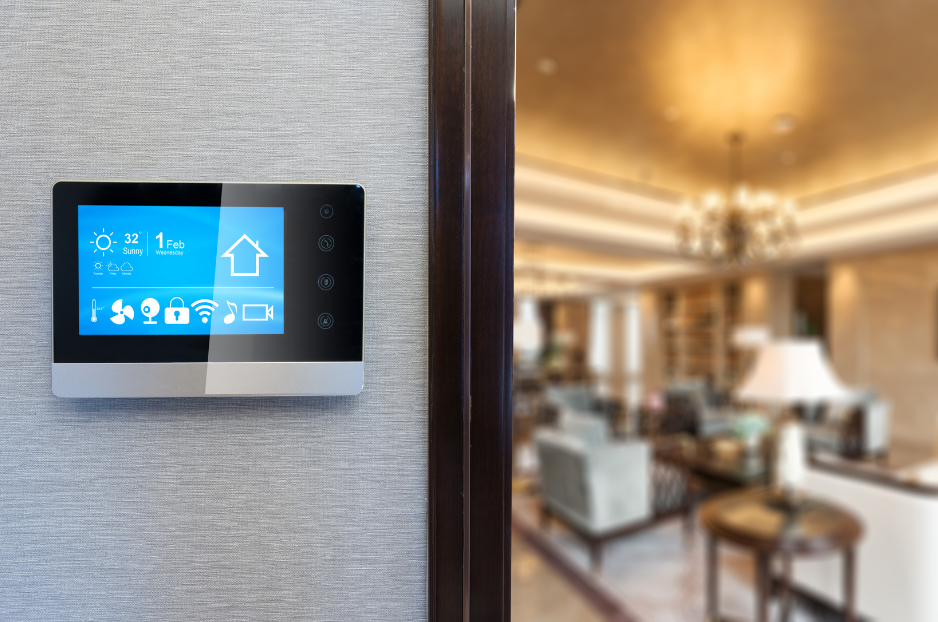
40+ Home Automation Ideas & Devices
Smart Lighting
Scheduled Lighting: With smart bulbs and a smart home hub like Samsung SmartThings, you can set your lights to turn on and off at specific times using the SmartThings app. You could even set routines to schedule mood lighting for particular times of day or occasions. By pairing a color-changing smart bulb like Philips Hue, you can adjust the color and intensity of your lights to create an atmosphere conducive to focus, chilling or dining.
To automate your home lighting you will need a smart bulb and a compatible smart app like the SmartThings App or Amazon Alexa in which you can set routines.
Motion-activated Lighting: Install motion sensors like the Philips Hue Motion Sensor along with your smart bulbs to control your lights automatically when movement is detected. I use this for my lights between my bedroom and bathroom so that through the night if I wake needing a pee I don’t trip on anything in my sleepy, half conscious state.
This can also be a good idea to alert you to movement if, for example you have kids that sleepwalk or are worried about intruders.
Motion sensors are easy to set up, and you can even get motion sensing smart bulbs now that don’t require any additional sensors, the tech is built in to the bulb. They will light up for a designated period before turning themselves off again.
Voice-controlled Lighting: Pair your smart lights with a smart speaker like Amazon Echo or Google Home, and control your lights using voice commands. This can be great for setting mood lighting or routines. Commands like ‘alexa, set lights to romantic’, or ‘set lights to dinner’ are examples of routines you can set to specific commands, once you have set the brightness and colour for the lights to set to when the command is spoken.
Even simple commands like ‘turn on living room light’ or ‘set lights to 20%’ will work without the need to set up any routines. All you need is a smart bulb and a voice enabled smart assistant. You don’t even need to have a smart speaker if you have assistants like google home, or the alexa app on your smart phone or tablet. Just pair the bulb with your app.
Outdoor Lighting: Use outdoor smart lights like the Ring Smart Lighting and set them to turn on and off at predetermined times like sunset and sunrise using the Ring app.
Lighting Notifications: With smart bulbs and a smart home hub, you can set your lights to blink or change colour when you receive a phone call, message, or email. This can be useful for people in lots of scenarios. Useful for the audio impaired, or for those having to put devices on silent for work, or in a loud environment such as when hoovering.
Integration with Other Devices: Sync your smart lights with your home security system, doorbell, or even your coffee maker for a fully automated experience. You’ll need compatible devices and a smart home hub for this.
For example, you could set a routine for your smart light to come on at 6 a.m. while your speaker plays music or tells you the weather, and the coffee machine starts to brew your morning cup. This can all be happening while you are getting dressed, saving time and creating a little less morning stress.
Or when someone rings your doorbell, or your phone at night, you can set your lights to come on in specific rooms of the house.
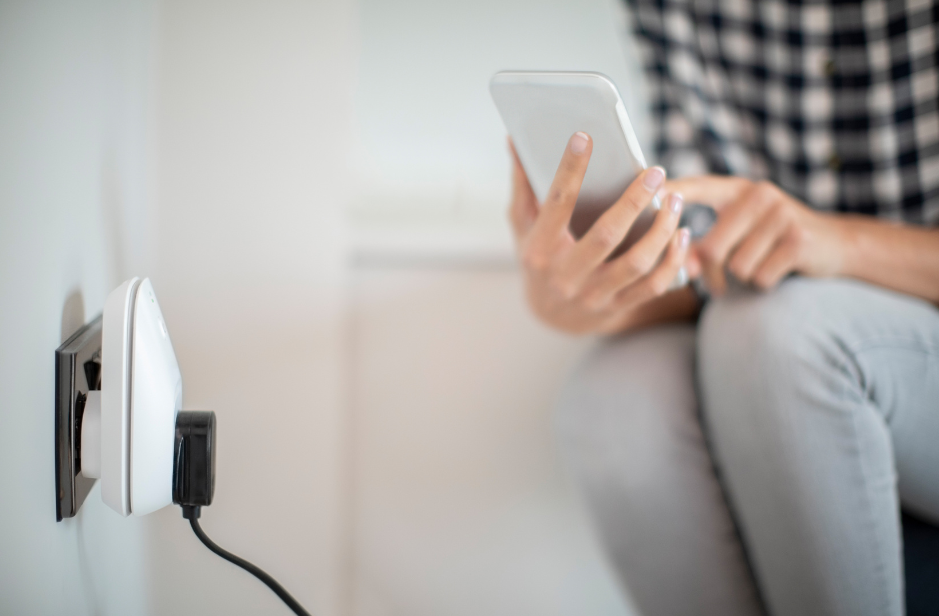
Smart Plugs
Scheduled Appliances: It’s not just lights you can schedule, it’s your devices too when you use a smart plug. Plug your coffee maker into a smart plug like the TP-Link or Wemo Mini Smart Plug and set it to turn on at a specific time every morning using the accompanying smart app on your phone or tablet.
Energy Monitoring: Use a smart plug with energy monitoring features like the TP-Link HS110 to track and reduce your energy usage. This can be a handy way to find out which devices in your home are heavy users of energy so that you can schedule them to turn off when not in use.
If you want to reduce your carbon footprint, you can get a little notebook, and try using this plug on one device at a time, maybe for a day or two each. Take note of how much energy they use, if there are times of day they use more or less energy and the difference it makes when the device is only on when in use. This can help you to create better habits around your energy consumption and your devices.
Remote Control: Plug any appliance into a smart plug and control it remotely using the plug’s app. These can be very handy for controlling devices that don’t come with their own remote, such as fans, speakers or non-smart table lamps.
Smart Charging: Plug your electronic devices into a smart plug to control their charging and prevent overcharging. Rather than leaving devices in to charge overnight, potentially reducing the life of their battery, you can schedule the smart plug to turn off at, say 2 am. Giving enough time to fully charge your device, but not leave it charging for far too long.
Temperature Control: Connect your fan or heater to a smart plug and control it based on temperature changes using a smart thermostat and the plug’s app.
Safety Measures: Plug potentially dangerous appliances like heated blankets or air heaters into a smart plug and set them to shut off automatically after a certain period using the plug’s app. This is good for preparing a bedroom in winter to be nice and snug when you or the kids are ready to go to bed for the night. It makes sure devices turn off even if you fall asleep and forget to turn them off manually.
Cooking: Plug your slow cooker into a smart plug and start cooking dinner at the perfect time while you’re still at work using the plug’s app. With the ability to control smart plugs remotely, you can set the slow cooker to turn on at the perfect time, even if you are going to be delayed at work. Just turn it on when you know what time you will be able to leave work to time it perfectly.
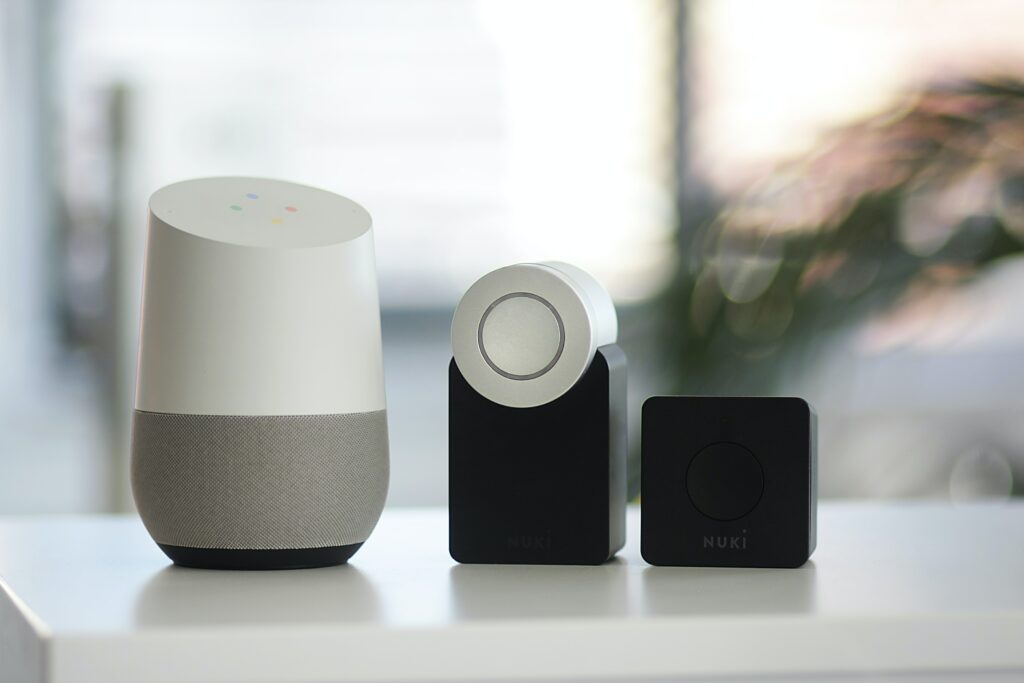
Smart Music
Multi-room Audio: With smart speakers like the Sonos One, Amazon Echo/Echo Dot or Google Nest in different rooms, you can play the same music throughout your home using the compatible app. You can even set them to play different music in different rooms, or to play the same playlist throughout the home.
Scheduled Music: Set your music to start playing when you wake up or come home using a smart speaker and its app. You can set up routines to play music when you finish work. When you turn on certain lights or when prompted to with various voice commands.
Music Alarms: If you are not a fan of alarm clocks, or flinch at the thought of getting out of bed in the morning, use a smart speaker to wake you up to your favorite song or radio station. You could play something upbeat and motivational to get you moving. Or perhaps something gentle to wake you softly. You can even set the speaker to gradually increase volume over time until you have no choice but to get up!
Soundtrack Your Day: Set different playlists for different times of the day or activities using a smart speaker and its app. You can schedule a cooking playlist, a workout playlist, or reading, working, relaxing and so on. These can be set to play by time or by voice command by either setting up routines or commands.
Party Mode: Use smart lights and speakers together to create a disco effect. You’ll need color-changing smart bulbs, a smart speaker, and a smart home hub for this.
Sleep Aid: Use a smart speaker to play soothing sounds or lullabies to help you or your children sleep. You can even set up a routine using a smart assistant to schedule the music to turn off and also the lights to turn off when the speaker hears snoring, or hears no sound for a given amount of time. Amazon Alexa is one assistant that allows such a routine.
Cooking Companion: Use a smart speaker to get recipe instructions read out to you as you cook. This can be very handy if you are making something messy and don’t want to ruin your cook books in grease or flour.
Fitness Companion: Use a smart speaker to play workout playlists or get exercise instructions. You can even set up a series of timers so that you can break up your workout between moves or stages. You could set a timer for 20 mins cardio for example, then have a second timer set up in your workout routine for 30 minutes weights. You could schedule workout music to run throughout, then schedule relaxing music for say 20 minutes when your workout ends.
You can also set up HIIT timers to schedule your sets and movements to get the most from your session, though the skills for this are not great yet, across all smart assistants.
Smart Climate Control
Scheduled Heating/Cooling: Use a smart thermostat like the Nest Learning Thermostat to adjust the temperature based on your daily routine using the Nest app. You can set routines based on temperature and time and adjust the settings remotely. Say for example you are staying out for the night, there is no need for your heating to come on as per schedule. You can adjust it remotely to save energy and money.
Smart thermostats can be used via voice command when home, or remotely through their accompanying app when out and about.
Geofencing for comfort: With a smart thermostat and its app, your thermostat can detect when you’re on your way home and adjust the temperature accordingly. This type of intuitive timing can save money and energy, while still ensure your house is up to temp when you set foot in the door.
Smart thermostats can learn your habits and adjust the temperature based on many different routines, behaviours and commands.
Integration with Other Devices: Your smart thermostat can communicate with other devices such as smart blinds to control the temperature more efficiently. They can also work in unison with other devices such as speakers and lights when you set up routines through your smart apps. You could set the heating to come on half an hour before you wake up, while also setting a routine for the lights and music to come on or the blinds to open as you wake. You’ll need a smart thermostat, smart blinds, and a smart home hub for this.
Zone Control: Use a smart thermostat and smart vents like the Keen Home Smart Vent to set different temperatures for different rooms in your home. This type of setup would require a solution using Keen Home or an equivalent heating solution that uses vents rather than central heating systems using radiators.
Some other smart thermostats such as Hive provide ‘Multizone’ solutions too. If you were to have two thermostats, one for upstairs and one for downstairs for example, you can set each thermostat to a different temperature and manage remotely through the app.
Weather Adaptation: Some smart thermostats can adapt to the weather, adjusting the temperature based on the forecast. If snow or rain are forecast, and the morning is particularly frosty you can set your thermostat to adapt to unexpected changes to keep you comfortable.
Air Quality Monitoring: Some smart thermostats like the Ecobee Smart Thermostat can monitor your home’s air quality and humidity levels. Some other climate control devices such as the Dyson hot and cool fan also monitor the level of your air quality. This is also compatible with smart speakers to operate with voice control for rotation and temperature and to maintain good quality air purification.
For this you will need either a compatible thermostat or smart fan, and a smart assistant, speaker or hub.
Maintenance Reminders: Use a smart thermostat to get reminders for when it’s time to change your HVAC system’s filters.
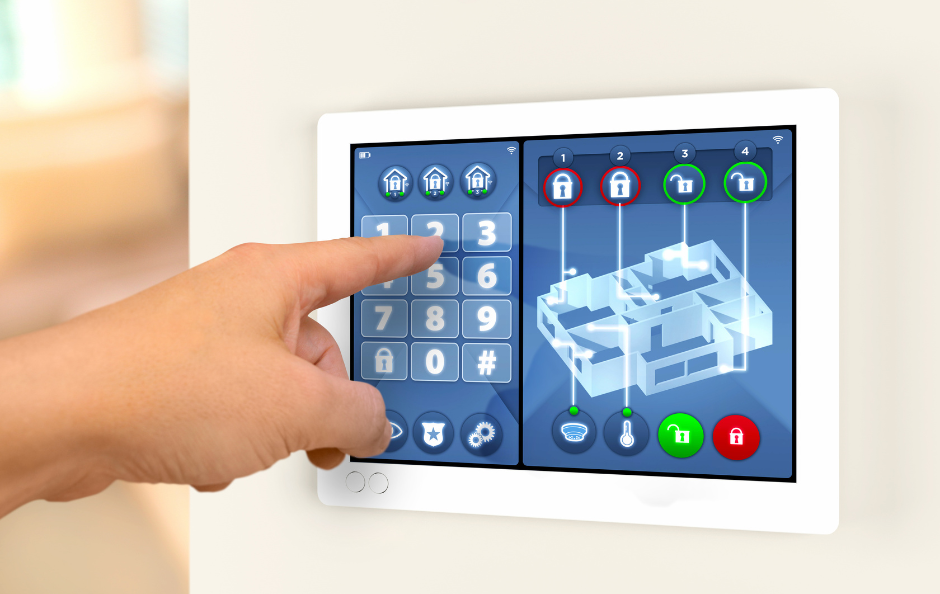
Smart Security
Smart Locks: Use a smart lock like the August Smart Lock or the Yale Keyless Smart Lock to control your locks remotely, and give temporary access to guests using the accompanying app. These can be really handy if you are away on a short trip for example, and you have a friend coming round to feed your fish or your cat. You can open and lock your property yourself remotely, ensuring you have full control of the access to your property.
Video Doorbells: Use a video doorbell like the Ring Video Doorbell to see who’s at your door from anywhere, and communicate with them using the Ring app. Ring connects easily to WiFi in your home and can be great for deterring mischief makers, or making sure parcel delivery drivers leave your stuff in a safe place.
Motion Sensors: I’ve mentioned using motion sensors above with setting lighting routines in your home. But you can also use them to get notified if unexpected motion is detected in your home. If you are home or not, these notifications can be very useful.
Couple up motion sensors with a smart security camera like the Arlo Pro or Ring with Video, to help you identify movement and monitor your home remotely.
Smart Alarms: Use smart smoke or carbon monoxide alarms like the Nest Protect to get alerts on your phone if the alarms go off. Modern smart alarm systems can operate across multiple rooms in your house, and are great for keeping you informed whether you are home or not, if there is any potential hazard in the house.
It might just be that your teenage son has burnt the toast, while you are at work, but it gives you the opportunity to check in and make sure everything is ok. Or it might be more serious. These alarms will keep you informed.
Window Sensors: Use window sensors like the Eve Door & Window to get notified if a window is opened when you’re not home.
Couple this up with a smart speaker like an Echo Dot, and you can talk through the speaker to alert any intruder to get out! You could also check out any footage on your Ring doorbell or smart security camera to see if you can make out who it is.
Often, if an intruder knows you have a Ring doorbell or similar setup, they will try to avoid and enter your house in a less obvious place. That is why window sensors can be so valuable.
Geofencing For Security: Similarly to setting up your devices to manage temperature based on your location, you can use the same techniques with a smart home hub and compatible devices to arm or disarm your security system based on your location. For example, you could set a rule for your smart door lock to disarm while you are parking the car, or when you approach your driveway if out walking the dog.
Or perhaps you could have your front door lock activate if you are out in the yard to stop anyone coming into your house unannounced.
Integration with Other Devices: Your security system can work with your smart lights or speakers to mimic human presence when you’re away. You’ll need compatible devices and a smart home hub for this. You could for example, have certain lights turn on and off at specified times or intervals, or blinds open and close, or your TV turn on and off if using a smart plug.
Smart Entertainment
Voice-controlled TV: Use a smart speaker to control your TV, change channels, or search for shows using voice commands. You can even set routines to carry out set commands to specific voice prompts. To do this you will need to connect your TV to a compatible smart assistant or speaker, or use an additional device like a Firestick.
With Amazon Alexa for example, using a smart speaker and a Firestick, you can command your TV to pause and the lights to come on when you are needing a toilet or snack break. Then when you are back, with another voice command the lights go off and TV will start streaming again. Very handy!
Gaming: Use smart lights like the Philips Hue Play and speakers to create an immersive gaming experience. You’ll need a smart home hub for this. For example, you could set up a command with your smart assistant like ‘playing call of duty’, which when spoken will set your lights to a designated level, your speakers to a designated level, and your music to a specific playlist.
Scheduled Shows: Use a smart TV and a smart home hub to set your TV to turn on to your favorite show at a specific time. You can also set it to turn off at a set time. This can be handy for scheduling TV time for your kids. It also gives you control over what younger kids are watching.
Smart Home Help
Some smart devices are great for setting up home automation around chores and household tasks, or taking care of jobs that free up more of your time. Here are a mix of some great smart home help devices.
Smart Vacuums: Use a smart vacuum like the iRobot Roomba or Bosch Pro to clean your home when you’re out. You can schedule cleanings using the accompanying app on your smart phone. These can be great home helpers.
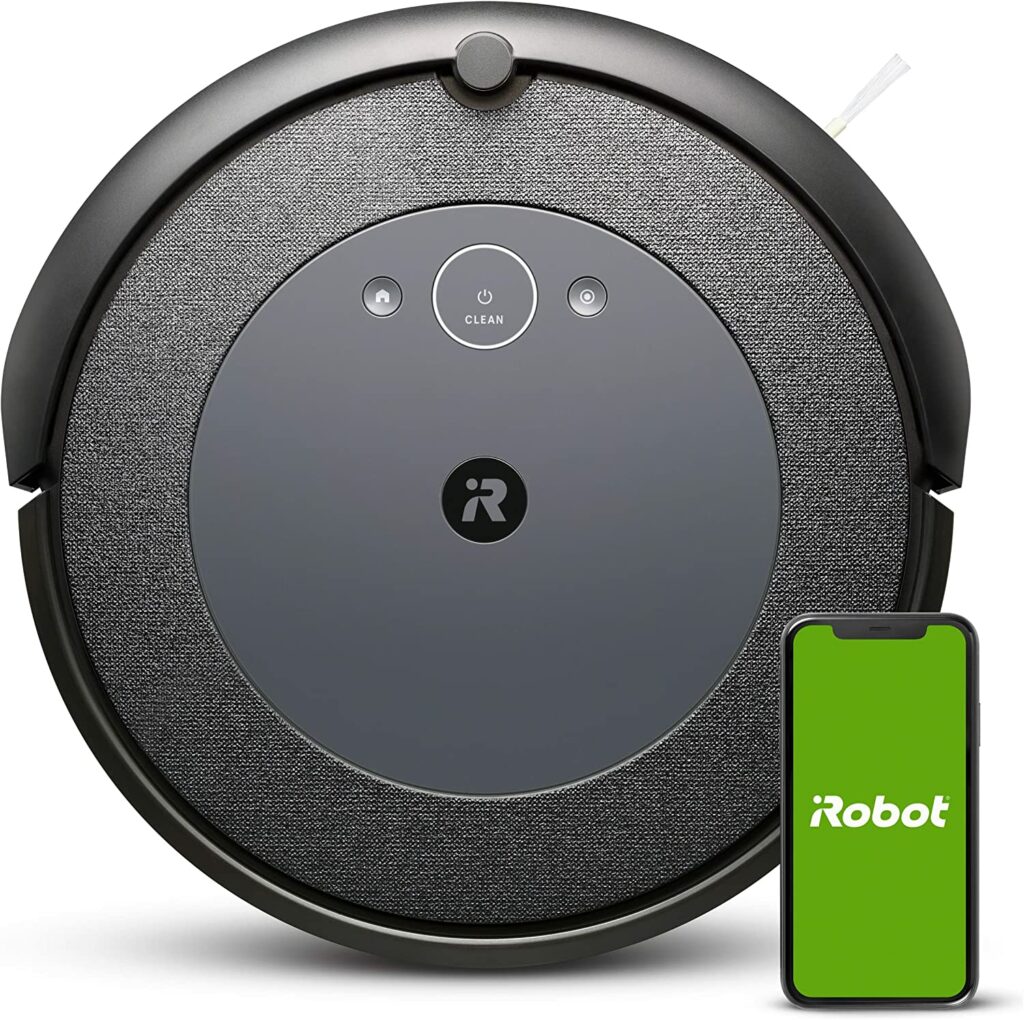
Say you are at work and you have unexpected guests coming in the evening, you can set the smart vacuum to work on the fly while you are at work so that the house is nice and tidy before your guests arrive.
Smart Lawn Mowers: If the lawn is getting a bit much for you, or you just don’t have the time to keep it neat and tidy. Use a smart lawn mower to keep your lawn neat and tidy. You can control them using the accompanying app from the comfort of your arm chair. These work similarly to smart vacuums in that they can sense when they are close to obstacles or edges, and are getting smarter as the technology develops.
Smart Sprinklers: Use a smart sprinkler to make sure your garden gets the right amount of water, at the right time. Smart sprinklers can synch with your other apps to take note of the weather, and can sense the moisture in the ground. This can ensure your grass is not over or under watered, saving energy, money and creating a well looked after lawn.
Smart Cooking Devices: Use smart cooking devices like the Instant Pot Smart WiFi to start dinner while you’re still at work. You can control it using the Instant Pot app. These will work independently of a smart plug, and can intelligently keep your food warm until you get home if you are running late.
Smart Mailboxes: Use a smart mailbox like the Danby Parcel Guard to get notified when you receive mail. You can control it using the Parcel Guard app. You could set up a routine on your smart assistant to notify you whenever you receive mail from any source. Through either the physical mailbox or by e-mail.
Other smart home devices that you can use for a variety of different routines include:
- Smart Refridgerators
- Smart Washing Machines
- Smart Dishwashers
- Smart Plant Monitors
You can set up lots of different routines to operate these devices either on their own, or as part of a bigger operation depending on your needs and preferences. For example, you could have a Saturday morning routine, where your dishwasher, washing machine and vacuum take care of all your chores. While at the same time your fridge tells you what you are running out of, which you can also reorder through your smart speaker, or add to a shopping list if you wish.
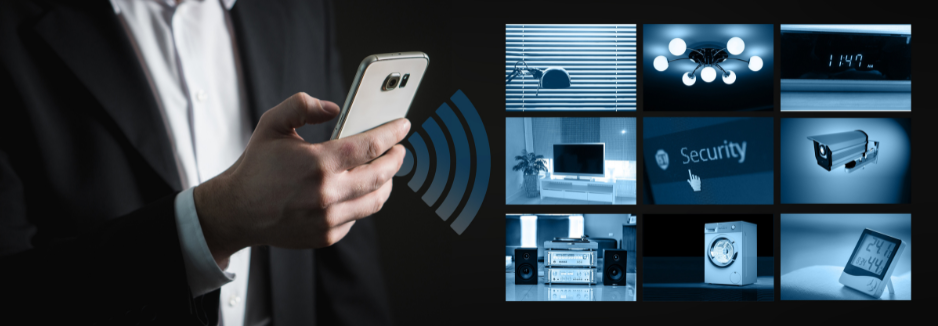
My Favourite Smart Speaker Routines
There are some routines that I find myself or the family using time and time again. These are routines that for one reason or another add value or peace in our lives. Here are some of my favourites.
Kids Homework Routine: I have a command set up in Alexa, where I set a series of timers to designate focus time, while a ‘studying’ playlist runs, the lighting turns to a brighter tone conducive to learning and their other devices are all set to silent.
Movie Night Routine: For this I use one of Amazon Alexa’s generic routines with the added function that I have the command also turn on the smart plug for my coffee machine. It’s really easy to set up using the app. It is the generic ‘I’m getting a snack’ routine which will:
- Pause/unpause your Fire TV, firestick or designated smart TV
- Turn on/off your selected lights
You can set how long you want the lights on and TV paused, or you can set the routine up to react to the words ‘i’,m back’ and your device will start streaming again.
You can add other steps or conditions to the routine though, which I did. I set it to turn on the smart plug for my coffee machine so a fresh pot can brew while I nip to the toilet. I’ve also set it to turn on the kitchen and bathroom lights as well as the living room light. All turn off when I tell my smart speaker that i’m ready.
Pet Care Routine: I use this one if I’m away from home for the evening or overnight. I’ve simply set up a routine to turn on a soothing playlist on low volume, and to dispense treats from my smart dispenser at regular intervals or when prompted depending on their behaviour. I haven’t setup a motion detector but I do have a video monitor setup in the living room so I can check in from time to time and give voice commands if needed.
Health Routine: I’m terrible for remembering to take my medication at night, and also for remembering to reorder before it runs out. This is just a simple routine I have setup to remind me in the evening at 10pm to take my meds. I also use it as the start of my nightime routine though, with a 30 minute playlist of unwinding music to settle me, as well as giving my meds time to settle before going to bed. If i’m not quite ready for bed I can turn off the music with a voice command, but it’s a good, simple routine to maintain.
I also have a monthly reminder set up for 1 week before my meds run out to make sure I order on time every month!
Lights Off At Night: I have recently started making use of another one of Alexa’s generic routines to turn my bedroom light off at night when I have fallen asleep. I like to read at night, but I like to read until i’m out for the night. If I plan to stop reading before I fall sleep I inevitably take an age to get to sleep. So more often than not I fall asleep book in hand, with the light still on.
The ‘Snore Your Lights Off’ routine takes care of that. As soon as my smart speaker hears me snoring, it turns my lights off. It’s not fool proof, but I am sleeping much better now!
Pomodoro Timer: This is a great generic routine set up in Alexa, and one I use often to keep me focused at work, particularly in the mornings. It’s really easy to setup. The routine runs for 2 hours as standard but you can set it for longer. In that time, there are voice prompts that tell you when focus time starts for 25 minute intervals. Between the focus time intervals there is a 5 minute break interval where music plays to give you a little break.
You can tweak the routine to provide longer intervals of focus or break time, or to extend the overall timer. You could even tell it to perform additional functions with your other smart devices, like reading you the weather or the time, turning on your coffee maker. But for me, the standard timer works a treat. A well used smart home routine, and a real benefit, at least for me.
That brings my list to an end. Hopefully I’ve given you some useful for smart home automation ideas, or at least given you an idea of the devices that are out there, and how they can work together to improve various areas of your life and home.


